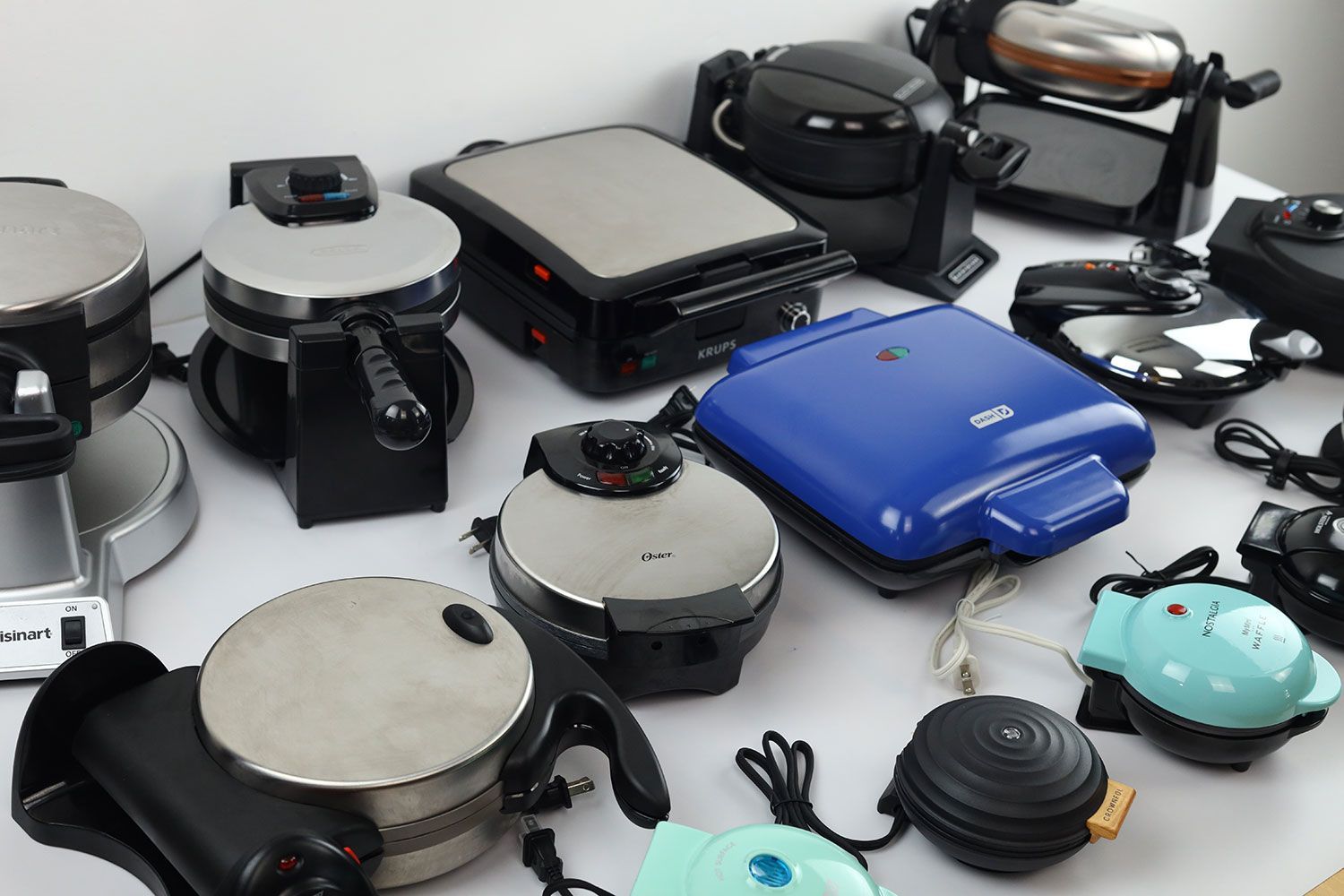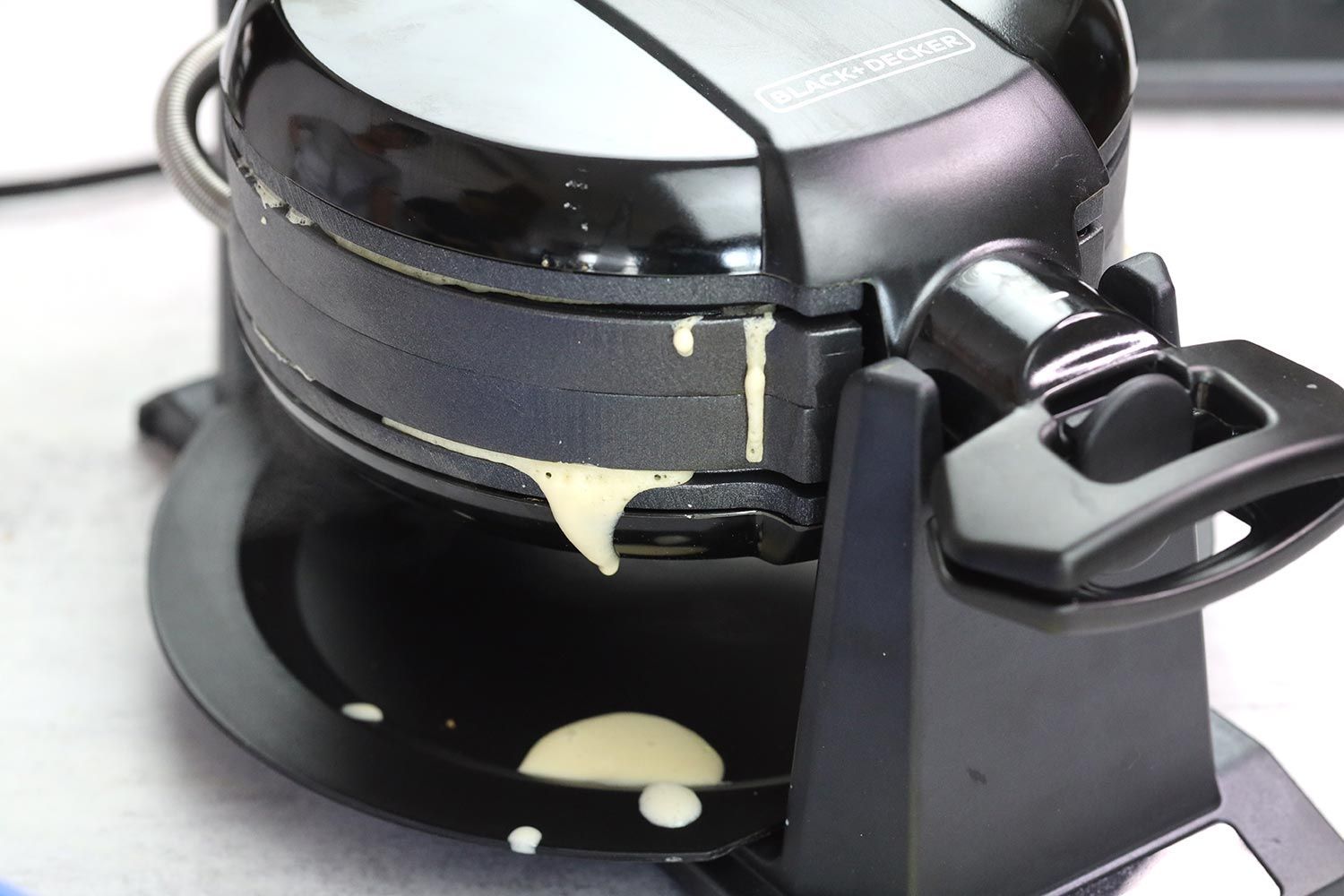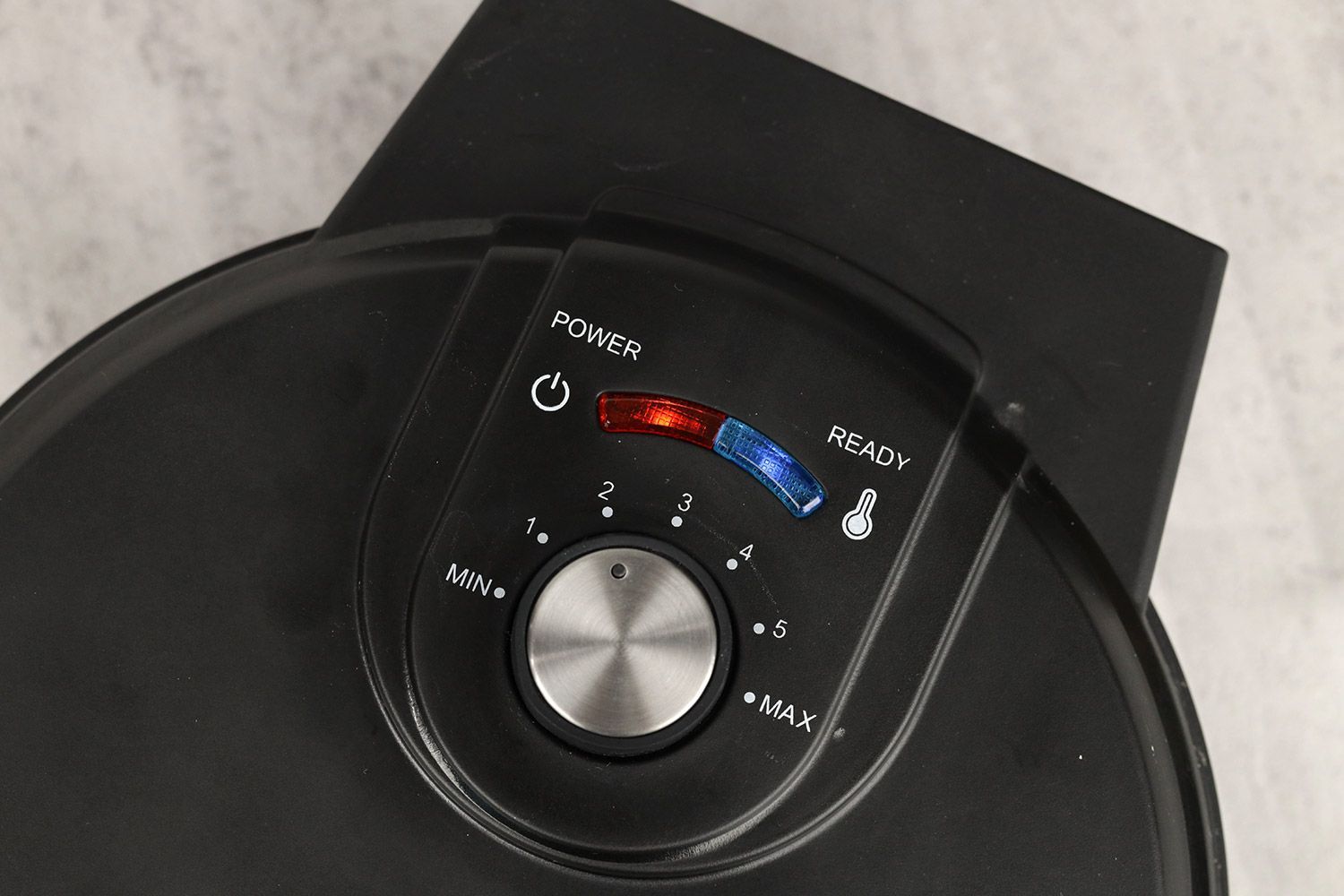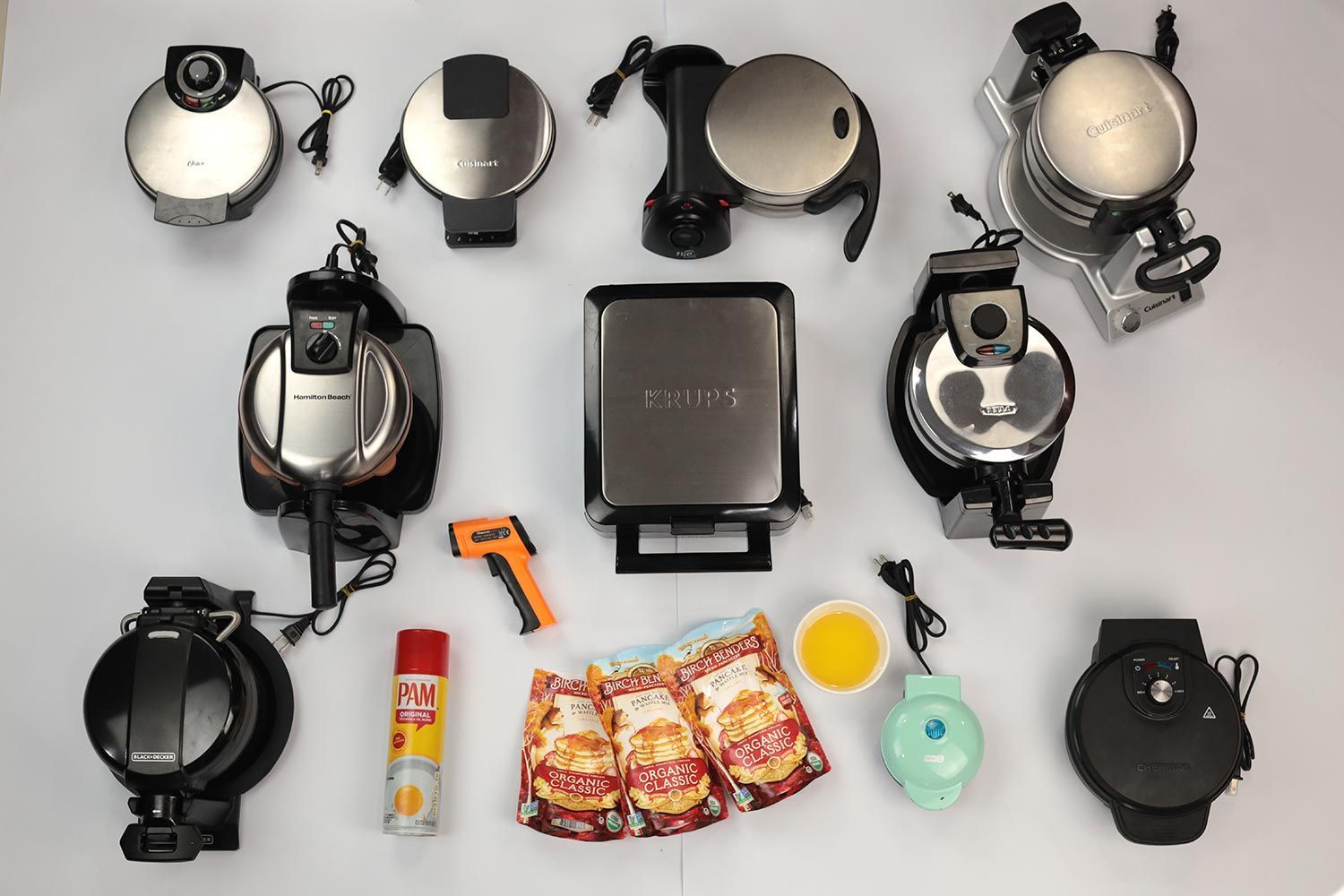Our recommendations are made independently. We may receive commissions from purchases made via our links.
How We Test Our Waffle Makers v1.1
At Shouldit, we’re committed to testing our products methodically and objectively. Here’s how we tested the waffle makers featured in our reviews!
Waffle makers operate in a simple and straightforward manner. Still, in order for us at Shouldit to find the best waffle maker on the market, we must put every model to the test.

We want these tests to be comprehensive but also easy for our readers to understand. This article is here to outline our testing methodology and explain what the data points in our reviews mean.
Note that our methodology and data points are subject to change over time. We may have to change our approach in the future to more accurately represent the quality of the products.
Every product that we present has been purchased on our own dime and delivered to our lab for testing. We don’t get any compensation from the manufacturers for these reviews. Once they arrive, they’re immediately put through a gauntlet of tests.
Overall Ratings
The total score for each waffle maker is calculated using three major criteria: Performance, Ease of Use, and Design. Each one is weighted differently based on how important it is to the average user. For waffle makers, the breakdown is as follows:
- Performance — 50%
- Ease of Use — 30%
- Design — 20%
In each part, there are a few sub-categories that add up to their respective total score. It may sound complicated, but we promise that there’s a method to the madness!
Performance
First is the performance test. In this test, our reviewers use the waffle maker in the lab. We cook a bunch of waffles to see how well it works.
The scores in this section are the most important figures of the review as it portrays the waffle maker’s performance level.
Performance takes up to 50% of the total score. The current iteration of the test is split into two parts with equal weighting: Self-Mixed recipe (50%) and Birch Benders mix (50%).
Self-Mixed Recipe (50%)
Many people like to mix their own waffle batter at home. Most of the ingredients are accessible and cheap. It’s also super easy to do. Our chef — Tuyet Pham — has developed a waffle recipe that we use in all of our tests. In this test, our reviewers mix all of the ingredients together from scratch to make one complete bowl of raw waffle batter. It’s then poured into the waffle maker and the final product is assessed.
The scores of the self-mixed recipe test are responsible for 50% of the final score of the performance section.
Birch Benders Mix (50%)
The second recipe is a simple pre-mixed batter. Many households use pre-mixed batter to give them a jump on breakfast. Thus, it’s given the same weight as the self-made recipe in our test, comprising 50% of the overall performance score.
We use the Birch Benders Mix for this section.
Design
In the design portion of the review, we assess the strengths of each product’s design and look for potential flaws.
The design section makes up 20% of the final score. Our reviewers will inspect three major items in this segment: Build quality (60%), the waffle plates (30%), and the control panel (10%).
Build Quality (60%)
As the name suggests, this is an assessment of the appliance’s quality of construction. Ideally, all parts of the product should be solidly built without any physical defects or obvious design flaws.
This section makes up 60% of the total score of the design portion.
Waffle Plates (30%)
The waffle plates are the parts that form the shape of the final waffle and serve as the machine’s cooking surfaces. We inspect the shape, patterning, coating, and other features to see how well they are designed.

This section makes up 30% of the total score of the design portion.
Control Panel (10%)
The control panel is the final major design feature of any waffle maker. A good waffle maker should have an intuitive control panel that anyone can operate without needing to read a manual.
It also has to be accurate. For example, the temperature adjustment knob needs to be well-calibrated. Inconsistent or inaccurate controls may result in ruined waffles.
Since it’s so important, the quality of the control panel makes up 10% of the total score in the design portion.
Ease of Use
The ease of use portion mostly has to do with the average user experience. We inspect the waffle maker to see how easy and convenient it is to use, how safe it is for the user, how easy it is to clean, and so on.
Ease of use makes up 30% of the final score. We measure four metrics that we think are crucial to a good user experience: Handling (25%), safety (40%), cleanability (25%), and indicator light visibility (10%).
Handling (25%)
Handling indicates how easy it is for someone to use the waffle maker. Ideally, even a lay person who has never touched a waffle maker shouldn’t have any difficulty operating the machine.
It makes up 25% of the total ease of use score.
Safety (40%)
The safety level of a waffle maker is assessed by measuring the temperature of its many different parts using a thermometer. Three parts that we regularly test are the lid, the handle, and the bottom. During usage, these are the parts that the user will commonly touch or handle. As a result, it’s important that they stay at a safe temperature at all times.
Additionally, we also check how well the wirings and electronics are contained in the waffle maker.

Safety makes up 40% of the total score for the ease of use portion.
Cleanability (25%)
We evaluate how easy it is to clean and maintain the various parts of the waffle maker. A waffle maker that’s easy to thoroughly clean gets a higher score.

Cleanability makes up 25% of the total score for ease of use.
Indicator Light Visibility (10%)
Among the many things we noticed as we began to work with waffle makers is that the quality of the indicator lights — crucial components in a waffle maker — are not consistent across the board. Some models have very bright indicator lights that are visible even under studio lighting. Meanwhile, others are so dim we had to turn off most room lights to see them.
Because of this, we’ve decided to add a small section to the ease of use portion, which measures the visibility of the lights. If the lights are difficult to see, the waffle maker gets a low score.

This section makes up 10% of the total score in the ease of use score.

